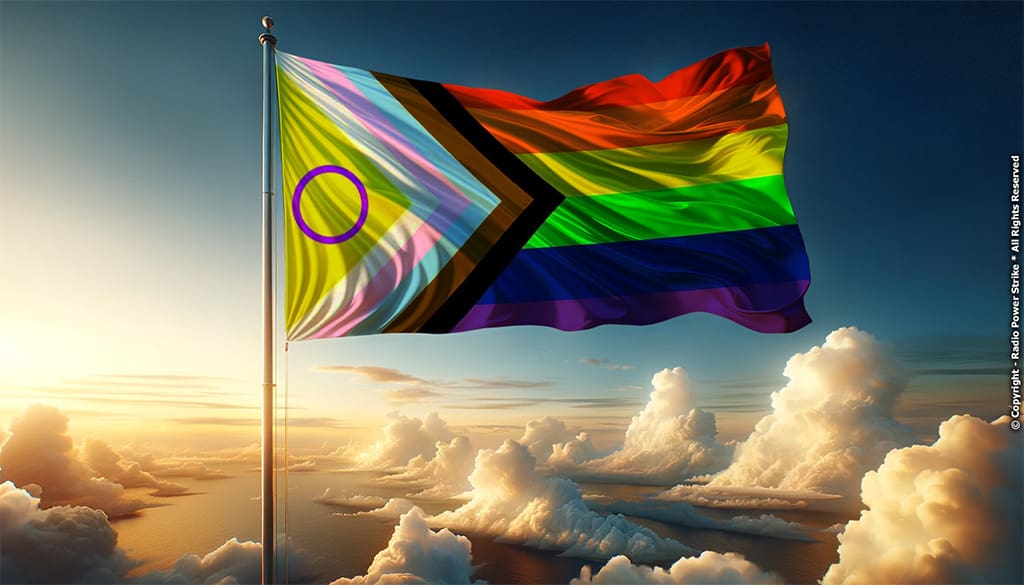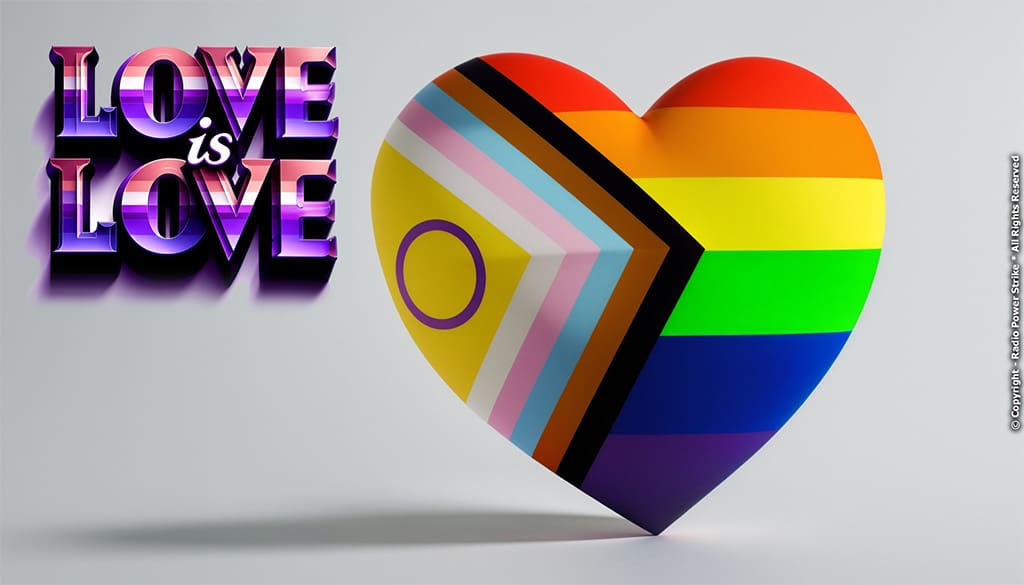What Does LGBTQIA+ Mean?

In an ever-evolving world, understanding the diversity around us is crucial, especially when it comes to the question: What does LGBTQIA+ mean? The acronym LGBTQIA+ represents the spectrum of sexuality and gender identity. But what does each letter stand for? We delve deep into each aspect, providing a clear and inclusive insight.
Overview
LGBTQIA+ is an acronym used to represent a broad spectrum of sexualities and gender identities. Each letter added aims to include and recognize the many nuances that make up the community.
The “plus” at the end of the acronym is significant. It encompasses additional sexual identities not directly represented by the preceding letters, such as pansexual and Two-Spirit.
Inclusion and representation are foundational, and this acronym underscores the need for recognition and respect for all identities, whether one is transgender or attracted to the same/similar gender.
What Does LGBTQIA+ Mean?
Meaning of Each Letter
- L (Lesbian): Refers to women or those aligned with the female gender who are attracted to individuals of the same/similar gender.
- G (Gay): Generally signifies men or those aligned with the male gender who are attracted to the same/similar gender. However, it’s also a term that some lesbians, as well as bisexual or pansexual individuals, might adopt.
- B (Bisexual): Denotes an attraction to people of all genders, encapsulating the fluidity of human attraction.
- T (Transgender): Describes individuals whose gender identity doesn’t align with the gender they were assigned at birth.
- Q (Queer or Questioning): “Queer” is a comprehensive term for non-cisgender or non-heterosexual individuals. However, it’s also historically been used as a slur, so its usage varies. On the other hand, “Questioning” is inclusive of individuals who are uncertain about their sexual orientation or gender identity.
- I (Intersex): Represents those born with varied sex characteristics that don’t fit into traditional binary definitions.
- A (Asexual): Often abbreviated to “ace”, this describes those who experience little to no sexual attraction.
- + (Plus): This symbol is of paramount importance, standing for other gender identities and sexual orientations not previously covered by the listed letters.
Related: What Do the Colors of the New Pride Flag Mean?
Acronym Variations
There are variations of the LGBTQIA+ acronym based on the many identities recognized globally. For example, LGBTIQ includes lesbians, gays, bisexuals, transgender, intersex, and queer.
A more extensive version, L.G.B.T.Q.Q.I.P.2.S.A.A, includes identities like two-spirit and androgynous. This variation covers an even broader range of identities and showcases the acronym’s continual evolution.
The acronym’s variation reflects the fluid nature of human identity and sexuality. The inclusion of new letters and identities signifies the community’s commitment to recognizing and validating all experiences.
Historical Evolution
Historically, the community was often referred to as “the gay community” or “the gay and lesbian community”. While representative, these terms did not encompass the community’s total diversity.
With time and a deeper understanding of identities, the acronym evolved to be more inclusive. Language and meanings change over time, and the LGBTQIA+ acronym reflects this adaptation to a broader representation.
The acronym’s transformation over the years attests to the growing acceptance and recognition of various identities within the community and broader society.
Importance of the “Plus”
The “plus” at the end of LGBTQIA+ is not a mere addition. It holds profound meaning, ensuring that no identity is forgotten or marginalized.
Many advocates and activists emphasize the importance of this “plus”. It serves as a reminder of the vast diversity present within the community, ensuring everyone feels represented.
Including the “plus” underscores the community’s commitment to recognizing and respecting all identities, even those still emerging or not widely known to the general public.
Related Terms
Beyond the acronym, there are other vital terms worth noting. “Cisgender” refers to individuals whose gender identity matches their birth-assigned sex.
“Non-binary” encompasses those who do not identify strictly as male or female. These identities challenge traditional notions of gender, showcasing its complexity.
“Gender nonconforming” refers to those whose gender expression doesn’t adhere to traditional norms. These terms, along with the acronym, help paint a complete picture of the rich tapestry of identities within the community.
Representation and Visibility
Representation is vital in any society. The LGBTQIA+ acronym serves as a powerful symbol of various identities’ recognition and inclusion.
Over the years, there’s been an increase in the representation of LGBTQIA+ community members in media. This has helped boost the community’s visibility and acceptance. However, challenges remain, especially for BIPOC members.
Continuing to promote inclusion and ensuring all voices are heard and represented is essential. Positive representation plays a crucial role in reducing stigma and promoting acceptance.
Using the LGBTQIA+ Acronym
While “LGBTQ+” is common, “LGBTQIA+” is more inclusive and represents a broader array of identities. When using it, it’s essential to respect and honor individual identification preferences.
Using the correct acronym showcases empathy and understanding. It demonstrates a commitment to recognizing and respecting all identities, ensuring no one feels marginalized or invisible.
It’s always good to remember that while the acronym might change or evolve, the primary goal remains the same: recognition, inclusion, and respect for all identities.
Challenges and Impact
The unified acronym has elevated the LGBTQIA+ community’s visibility. However, debate persists over which acronym variation to use.
Some people prefer “LGBT” for its simplicity, while others opt for “LGBTQIA+” for its inclusivity. Regardless of preference, the end goal is the same: recognition and respect.
Recognizing and celebrating diversity is key to a more inclusive and welcoming society. By understanding and using the correct acronym, we can take a step forward in promoting equality and acceptance for all.
Resources
For those wishing to dive deeper, organizations like The Trevor Project, GLSEN, and the National Center for Transgender Equality offer valuable resources.
The world is diverse and multifaceted. Recognizing and celebrating this diversity is vital. Always prioritize how individuals choose to identify.
In the end, it’s not the acronym itself that matters, but what it represents: a call for recognition, respect, and celebration of all identities. Let’s continue working together to build a more inclusive and accepting world for all.

Frequently Asked Questions
How are sexual orientation and gender identity determined?
Sexual orientation and gender identity are complex and influenced by a combination of genetic, biological, psychological, and social factors. While there’s no consensus on exact reasons, these aspects are generally shaped at an early age. People may realize their orientation or identity at different stages in life, with experiences varying greatly among individuals.
What challenges do members of the LGBTQIA+ community face?
Members of the LGBTQIA+ community often encounter violence, inequality, and discrimination worldwide. Legal penalties for same-sex relations exist in some countries, while in others, individuals face social discrimination and lack of access to health care and protection in schools and workplaces. These challenges significantly impact their emotional and mental health.
Is it possible to change a person’s sexual orientation or gender identity?
No. Attempts to change someone’s sexual orientation or gender identity, such as through forced therapies, are harmful and violate human rights. Being LGBTQIA+ is not a disorder, and such attempts can cause severe psychological trauma.
Does exposure to LGBTQIA+ people or learning about them negatively impact children?
No, learning about or spending time with LGBTQIA+ individuals does not affect a child’s sexual orientation or gender identity. Denying such information can contribute to stigma and isolation among young LGBTQIA+ individuals.
Can LGBTQIA+ people be good parents?
Yes. Research shows that children of LGBTQIA+ parents do not differ significantly from those of heterosexual/cisgender parents in terms of development, adjustment, or well-being. Concerns about queer parenting are often based on prejudice and unfounded stereotypes.
How can I be a good ally to the LGBTQIA+ community?
Being a good ally involves examining personal responses to stereotypes, getting to know LGBTQIA+ individuals, and collaborating to fight prejudice. Advocating for rights, promoting non-discrimination policies, and supporting open expression of LGBTQIA+ identities in various settings are vital steps.
Have LGBTQIA+ people always existed in history?
Yes, LGBTQIA+ individuals have always been part of societies globally. Historical records, including ancient texts and art, indicate the presence and often acceptance of LGBTQIA+ people in various cultures across different periods.
